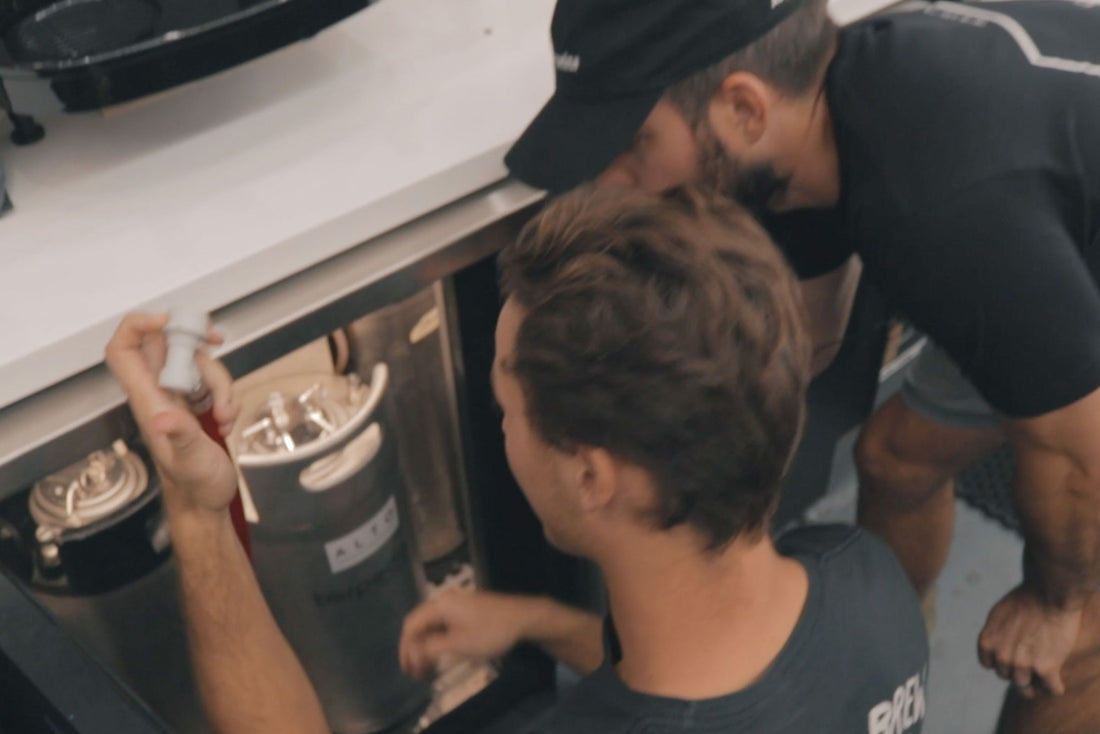
How To Cold Brew: Kegging your Cold Brew
How to Keg Your Cold Brew
The first step in kegging cold brew is dialing in your commercial process. If you haven't yet done that, go (here). Already humming along, whipping batch after batch up week after week?? Time to upgrade how you serve your cold brew.
Profit is a function of two things: revenue and costs. The labor required to pour a quick drink from a tap is minimal compared to an equivalent pour over, pulling a shot, or pouring the perfect latte. Every order of cold brew will shorten your line as the time per drink is similar to that of drawing hot coffee from a batch brewer. Furthermore, the cold brew can be prepared in advance and at a slow time during the workday or after hours when time is at less of a premium. For a relatively large initial investment, the labor savings and better customer service times can make serving cold brew on tap completely worth it.
Serving cold brew on tap also allows you to offer the increasingly popular nitro cold brew options to your lineup. Cold brew infused with high-pressure nitrogen creates a spectacular upward cascading effect from the nitrogen bubbles coming out of solution in the lower pressure outside of the keg. This creates excitement for your customers and is often a moment they will want to share with their friends in the shop and online. Having people excited about the new drinks they are trying is what operating a coffee shop is all about.
If you do decide to serve your specialty cold brew on tap, use nitrogen. Steer clear of carbonation or beer gas as your pressurizing agents. Both of these options contain carbon dioxide which will gradually acidify your cold brew over time. The longer the coffee sits in the keg, the more the flavor changes and the less palatable it becomes. Nitrogen on the other hand has no negative impacts on taste and should be your go-to gas when kegging coffee.
Finally, kegging specialty cold brew with nitrogen helps minimize the oxidation, or aging, of the coffee. The presence of oxygen over long periods of time can lead to dull flavors and an undesirable taste profile. Most shops only brew in batches that can be used in the first day or two, but the longer the cold brew sits in oxygen, the more likely it is to taste stale. Keeping your cold brew on nitrogen prevents shops from serving bad product and wasting spoiled cold brew. One of the defining characteristics of cold brew coffee is its stability over time. Where espresso is best within minutes and batch brewed coffee is best within hours, cold brew has the potential to make it days before noticeable declines in quality if it is brewed and stored correctly.
Kegging provides shops with the unique opportunity to serve craft cold brew drinks on tap. The simple syrups, bitters and other ingredients can be pre-mixed into the kegs and dispensed at a later time. While lacking the showmanship of mixing the mocktails in front of customers, the tradeoff in kegging mocktails is being able to offer craft cold brew drinks at a fast pace. Many of these steps can be combined and expanded upon to further elevate the craft of cold brew.
Some of the major drawbacks of kegging cold brew is:
- Cost - While the cost of the kegs, kegerator and associated equipment is more than most items on the list; consider that kegs help decrease labor costs and spoilage while increasing customer options and excitement.
- Size - The amount of space that the equipment takes up in the shop is a real concern and might make this a hard add for some shops. The recommendation here would be to get creative and see if you can make it work.
- Complexity - Setting up and maintaining a tap system can seem overwhelming at first, but it is a simple and intuitive process that we would be happy to walk any shop through or help troubleshoot problems as they arise. There are a few decent tutorials online and we plan on creating some content of our own to help with this effort.
As with any new addition, there is a cost and a learning curve associated with serving cold brew on tap. The cost and learning curve here is in line with other equipment essential to specialty coffee including modern batch brewers and espresso machines. This is an investment worth making for any shop looking to elevate the craft of cold brew / scale their production.
Kegging cold brew is vital for scaling your wholesale production. If you have one facility brewing/ harvesting cold brew, you'll be able to scale more effectively as your operations and clients grow. As always, you'll be able to brew with Alto no matter what size you get to. Here's a photo of one of our customers (Banjo Coffee in Atlanta) doing huge batches using ALTO.


If you prefer to keep your batches small to dial in each individual bean, you can go the route that Arcade Roasters took with their cold brew by brewing in many 5 gallon buckets.
Stock up on your filters here!
Have any questions? Send us a DM on Instagram : @altocoldbrew
